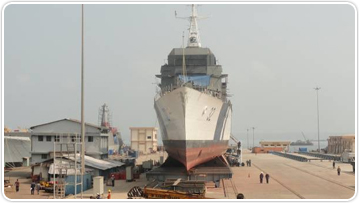A Maritime Boost with Far-Reaching Benefits
Maritime News India: India’s shipbuilding sector is undergoing a transformation with new policies, green initiatives, and financial support. The Ministry of Ports, Shipping, and Waterways (MoPSW) has introduced key measures to modernize shipyards, promote sustainability, and ensure global competitiveness. While these policies provide significant advantages, they also pose challenges for certain stakeholders.
Who Benefits from India’s Shipbuilding Growth?
1. Domestic Shipbuilders and Maritime Companies
- Indian shipyards gain a competitive edge with the Right of First Refusal (RoFR) prioritizing locally built vessels.
- The ₹4,000 crore financial assistance policy helps shipbuilders transition to green technologies.
- The ₹25,000 crore Maritime Development Fund enables long-term financing, reducing reliance on costly external funding.
2. Indian Workers and Maritime Professionals
- Development of shipbuilding clusters creates employment opportunities in design, construction, and maintenance.
- Green initiatives like the Green Tug Transition Programme (GTTP) promote new skills in sustainable maritime operations.
3. Indian Economy and Coastal Communities
- Increased shipbuilding activity generates economic growth, benefiting ancillary industries like steel, electronics, and logistics.
- Enhanced coastal and inland shipping improves connectivity, supporting businesses and local trade.
Who Faces Challenges?
1. Small and Medium Shipyards
- Large shipyards with better financing and advanced technology may dominate the market, leaving smaller players struggling.
- Strict environmental compliance may pose financial burdens on smaller shipyards that lack the capital for green technologies.
2. Foreign Shipbuilders
- The priority given to Indian-built vessels reduces opportunities for foreign companies, affecting international trade partnerships.
- Exemptions on Basic Customs Duty (BCD) for ship components support domestic manufacturing but may discourage foreign investment.
3. Traditional Shipbuilding Communities
- Artisanal shipbuilders, particularly those engaged in wooden boat construction, may find it difficult to adapt to modernized infrastructure and regulatory changes.
Making the Policy More Inclusive: A Balanced Approach
1. Supporting Small and Medium Shipyards
- Introduce subsidized loans and grants specifically for small shipyards to adopt green technologies.
- Establish skill development programs to help smaller players transition into advanced shipbuilding processes.
2. Encouraging Global Partnerships
- While prioritizing domestic production, India can facilitate joint ventures with international shipbuilders for technology transfer.
- Allow foreign investments in sustainable shipping innovations to maintain global competitiveness.
3. Preserving Traditional Shipbuilding Heritage
- Recognize and integrate artisanal shipbuilders into the formal sector by providing them with government support and training.
- Develop special economic zones (SEZs) for smaller, traditional shipbuilding clusters to ensure they remain competitive.
A Sustainable and Equitable Future for Indian Shipbuilding
India’s shipbuilding revival presents immense opportunities for economic growth and environmental sustainability. By ensuring inclusive policies that support all stakeholders, the country can create a fair, competitive, and globally recognized maritime industry.





One thought on “India’s Shipbuilding Renaissance: Growth, Challenges”